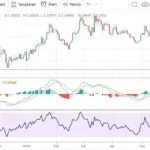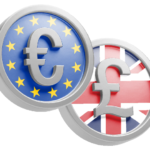The term Web3 has become one of the most talked-about ideas in the digital world, promising to reshape how we interact with the internet, own digital assets, and invest in technology. But beyond the buzzwords, what exactly is Web3—and what opportunities does it hold for everyday investors?
What Is Web3?
Web3 refers to the next generation of the internet—a decentralized version built on blockchain technology. Unlike Web2 (the current internet), which is dominated by big platforms like Google, Meta, or Amazon, Web3 aims to give users control over their data, identity, and digital assets.
In simple terms, it’s an internet owned by its users, not corporations.
Key Web3 technologies include:
- Blockchain: The foundation of Web3, enabling transparent and secure transactions.
- Cryptocurrencies: Digital tokens like Bitcoin or Ethereum that facilitate payments.
- Smart Contracts: Self-executing codes that enable trustless agreements.
- Decentralized Applications (dApps): Apps that run on blockchain rather than centralized servers.
Why Web3 Matters for Investors
Web3 isn’t just a tech revolution—it’s a financial one. By removing intermediaries, it opens investment opportunities that were once limited to large institutions.
Here’s how everyday investors can participate:
1. Investing in Cryptocurrencies
Web3 runs on crypto. Coins like Ethereum (ETH), Solana (SOL), or Polkadot (DOT) power decentralized apps and networks.
Investors who believe in the long-term vision of Web3 often allocate part of their portfolio to these foundational tokens.
2. Exploring Decentralized Finance (DeFi)
DeFi platforms allow users to lend, borrow, and earn interest without banks. For example, by staking crypto on platforms like Aave or Compound, investors can earn passive income—similar to earning interest in a savings account, but often at higher rates.
3. Owning Digital Assets & NFTs
Non-Fungible Tokens (NFTs) represent ownership of unique digital items—art, music, or even virtual land. While early hype has cooled, NFTs now extend to real-world assets, such as property deeds and intellectual property rights.
4. Participating in DAOs
Decentralized Autonomous Organizations (DAOs) are blockchain-based communities where members vote on decisions using tokens. Investors can join DAOs that focus on specific causes, projects, or investments—giving them a say and a stake in the future of innovation.
5. Web3 Stocks and ETFs
For those less comfortable with crypto wallets, traditional finance offers indirect exposure through Web3-related companies or exchange-traded funds (ETFs) that invest in blockchain infrastructure, gaming, and metaverse projects.
Risks and Considerations
While Web3 brings exciting potential, it’s not without risk:
- Volatility: Crypto markets can swing sharply.
- Scams & Rug Pulls: The lack of regulation makes research essential.
- Regulatory Uncertainty: Governments are still defining rules for digital assets.
- Technology Barriers: Managing wallets and private keys can be intimidating for beginners.
The golden rule: never invest more than you can afford to lose, and always conduct due diligence.
The Future of Web3 Investment
As blockchain technology matures, Web3 is likely to become more user-friendly and integrated into everyday life—from decentralized social media to tokenized real estate. The next wave of investors could benefit from entering early—provided they approach it strategically and cautiously.
Final Thoughts
Web3 isn’t just a new internet—it’s a new economic frontier. For everyday investors, it represents a chance to participate in the digital economy’s foundation, rather than merely being a user of it.
Whether through crypto, NFTs, or DAOs, the Web3 era offers opportunities to build wealth in a decentralized, community-driven ecosystem—one block at a time.













